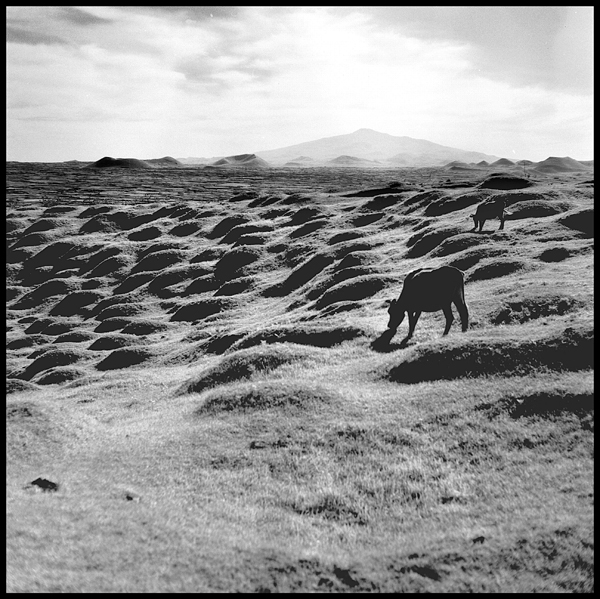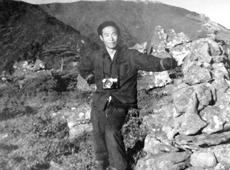| |
 |
|
| ▲ Ko Young Il's work explored with intimacy Jeju's oreum. Photo by Ko Young Il |
“What keeps me shooting my camera is Jeju’s disappearing natural beauty due to accelerating development. People might think that the nature of Jeju island will remain forever, but Jeju’s natural beauty is already disintegrating.”
These words are taken from a commemorative photo book titled ‘Jeju’s real portraits through the eyes of Ko Young Il.’ The book was published in 2011 to commemorate the second anniversary of the death of the legendary Jeju photographer who passed away in 2009.
Ko documented the living history of Jeju Island through his photography. The vivid side of Jeju that he so desired to capture was the same essence being lost to industry and tourism.
The commemorative book is a collection of 250 photos taken between 1960 and 1980, when the first strong winds of development were blowing across the island.
Ko left almost 28,000 pictures as his legacy and they are not simply landscapes, but display the heart and soul of the island which he immortalized with his camera. Recently, some of his work was displayed at Jeju Stone Park.
Back in 1960, particularly after the experience of the Korean War, there was increasing awareness of the artistic value of photography to document and chronicle all aspects of life and the suffering of the people. Ko Young Il was no exception and he shared the spirit of the times on Jeju island, his hometown.
The photographer has many “firsts” to his name. He was the first war correspondent from Jeju Island to cover the Korean War after joining the Marine Corps as a war photographer in the 1950s. He was also the first photographer to hold solo photo exhibitions on Jeju island in 1957, 1959 and 1962. The island’s first photography enthusiasts’ club, “Jeju Camera Club,” was also formed by Ko, contributing to the rapid growth of the art here.
He emphasized that, “the real essence of Jeju island should be created through the art form of photography which would add international value to Jeju.”
Ko saw the stones and wind of the island as the blood and flesh of human beings.
The photo above is a cross-section of what he calls the “flesh of Jeju Island,” seen nowhere else. In the photo, horses peacefully graze on the wild grass of Jeju’s rolling oreum hills, a sign of the island’s turbulent volcanic origins.
Scientifically speaking, oreum are simply secondary volcanic cones; however, they are more than that for Jeju Islanders.
Mt. Hallasan, the highest peak in South Korea, located in the center of the island, is a vigilant goddess who protects Jeju Island with her 368 oreum “children.”
Not only do oreum create Jeju’s unique landscape. they are entwined with the daily life of Jeju people, providing comfort and even traumatic memories of Jeju’s great tragedy, the Jeju Massacre.
Cattle graze on the lush wild grasses, crops are often planted on the oreum’s lee side, and most notably many tombs are found on or at their base.
The oreum tombs surrounded by stone walls are a natural place of communion for the dead and the living. The photographer said, “Jeju people live together with their ancestors and the oreum. Jeju’s symbolic icons are inseparable from the tombs permeated with the breath of their ancestors.”
The photographs he took became his life itself, and the living history of Jeju island. Now they are the remaining legacy for all who regret the passing of Jeju’s disappearing beauty.
Profile: Ko Young Il
| |
 |
|
| ▲ The late Ko Young Il was a pioneer of photography on jeju Island. Photo courtesy Ko Young Il |
The Jeju-born photographer graduated from Hyehwa University, now Donguk University in Seoul. After returning to Jeju Island in 1948, he began his career as a photojournalist for local newspaper the Jeju Sinmun, later becoming editor-in-chief for Jeju Sinbo and Jaenam Sinmun. When the Korean War broke out, he joined the Marine Corps as a war photographer and is known as the first war correspondent from Jeju island. He also spent many years as a high school teacher. |





















